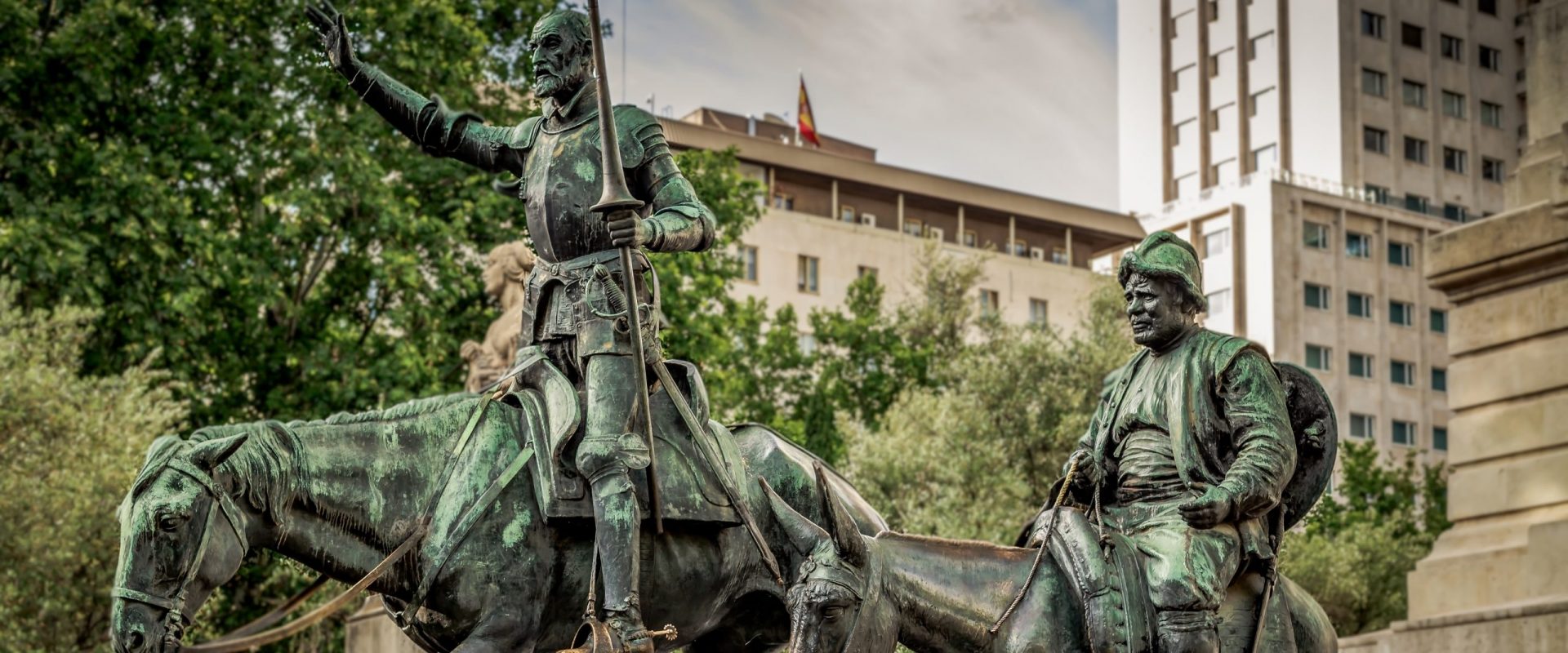Contents
Cervantes’ essentials in being human
All human beings are thinkers and practitioners. Everyone makes sense of the things of the world in which they find themselves and tries to find their way thinking into the darkness and examine it for a practical way of dealing with it. Whether something is experienced as meaningful is indeed a process within the individual, but: »According to a dialogical principle, the person does not gain its actual reality from itself, but from the other in the unity of the human being with the human being and their interaction in a common world.« (Dorra, 2021).
This brings us to a central theme which is also found in Cervantes’ stories of Don Quixote and Sancho Panza. But what is the fascination of this strange pair that has captivated people since its appearance and continues to do so today? What made The Ingenious Gentleman Don Quixote of La Mancha become one of the most influential and best‐known books in world literature? What moves us to draw on their signature in our blog, and what does Quixote have to do with leadership?
To this day, there is no conclusive understanding of what the real message behind the work is; yet it has inspired many artists and thinkers. Cervantes’ central question is what is reality or dream in our world, what is reality or ideal, what is common sense or fantasy. This is a fascinating question in itself, and one that keeps coming up as you read the two volumes. However, it is not easy to interpret what Cervantes really wanted to illustrate with the antipodes Don Quixote and Sancho Panza. The work has therefore been subject to many interpretations: Parody of the modern chivalric novels of the time, description of a heroic idealism, writing about one’s own isolation, criticism of Spanish imperialism, history of baptised Jews in the Spanish society of the time. Artists such as Grandville, Alfred Kubin, Honoré Daumier, Adolph Schroedter, Gustave Doré, Salvador Dalí and Pablo Picasso dealt with the work and left behind a diverse oeuvre. But poets and thinkers in particular have been fascinated by the tragic hero.

